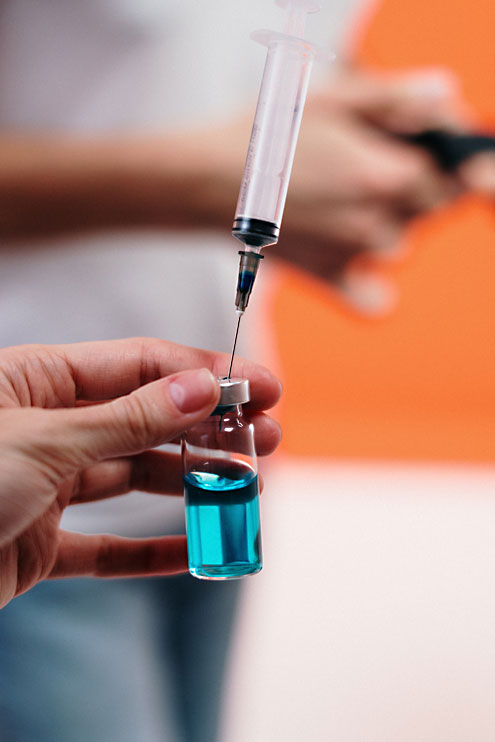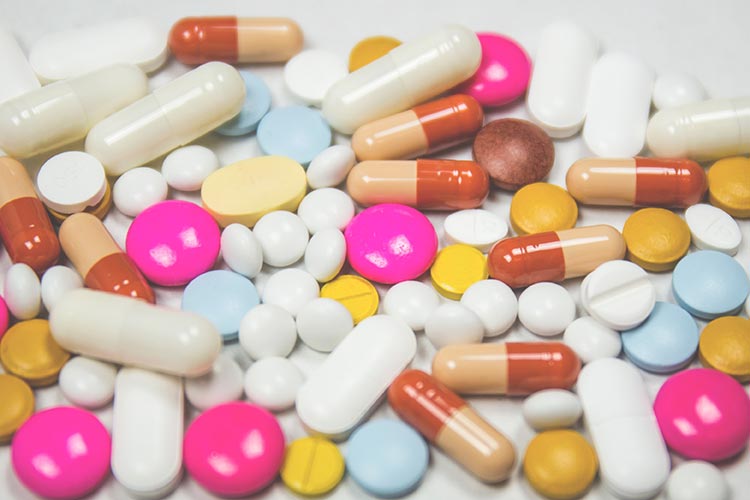Within a week or so from the identification of COVID-19, China conducted a treatment study using a combination of antiviral drugs, lopinavir and ritonavir. Although patients who were assigned to take the combination drugs showed some positive response, it was not significantly different from patients who had not received the combination therapy.
 This does not necessarily mean treatment failure, but rather timing of the doses during the two phases of the infection may need to be modified. Moreover, can it be that different dosing regimens may be more effective?
This does not necessarily mean treatment failure, but rather timing of the doses during the two phases of the infection may need to be modified. Moreover, can it be that different dosing regimens may be more effective?
Some treatment thought has been given to the use of angiotensin converting enzyme inhibitors such as captopril, lisinopril, and others. In addition, angiotensin receptor blockers such as losartan, irbesartan, and others have also been suggested to treat COVID-19.
It is known that the virus does enter cells through what is termed the renin-angiotensin system. It is not known whether angiotensin converting enzyme inhibitors and angiotensin receptor blockers inhibit or accelerate entry of the virus into the cell. Additional studies are needed. Patients with hypertension and/or heart failure seem to have higher morbidity due to the virus’s effect on the renin-angiotensin system.
Questions arise about the use of non-steroidal anti-inflammatory drugs, such as aspirin, ibuprofen, naprosyn, and others, to treat symptoms of a COVID-19 infection.
Can these agents increase the sensitivity of viral entry or ameliorate infectious symptoms? For now, the data are lacking. So too for corticosteroids such as hydrocortisone, prednisone and others.
The second phase of the COVID-19 infection involves an inflammatory response of the lungs. Would treatment with the corticosteroids reduce the inflammation or contribute to worsening the patient’s condition? It may be possible to successfully treat COVID-19 with a combination of antiviral agents plus corticosteroids. More studies are needed.
 There has been much talk about the use of chloroquine and its derivative, hydroxychloroquine, two drugs used as antimalarials, amebicides, and to treat rheumatoid arthritis and lupus. Chloroquine was actually studied in 2005 to treat coronavirus. Chloroquine creates an alkali media which destroys the coronavirus. These are promising drugs for not only to treat COVID-19, but as preventative agents.
There has been much talk about the use of chloroquine and its derivative, hydroxychloroquine, two drugs used as antimalarials, amebicides, and to treat rheumatoid arthritis and lupus. Chloroquine was actually studied in 2005 to treat coronavirus. Chloroquine creates an alkali media which destroys the coronavirus. These are promising drugs for not only to treat COVID-19, but as preventative agents.
New York State began a study March 24 using the combination of hydroxychloroquine and an antibiotic, azithromycin. I believe the antibiotic has been added to combat possible bacterial lung infections seen with COVID-19. Additional studies of dosing regimens and timing are needed.
Remdesivir is an antiviral agent used to treat the Ebola virus. It is still an experimental agent but is being tested soon in 1,000 patients in Nebraska to determine dosing and efficacy in treating COVID-19.
An anti-influenza drug, favipiravir, approved in Japan, has shown promising results. After four days of treatment for COVID-19, patients tested negative who originally tested positive. However, this drug may not be effective in severe forms of COVID-19. There are no published studies as of today.
 Japan has an agent, camostat mesylate, used to treat chronic pancreatitis and reflux esophagitis. This drug has been found to block COVID-19 from infecting the lungs. As with the other drugs mentioned here, studies are needed to determine the true efficacy as well as the side effects when treating COVID-19.
Japan has an agent, camostat mesylate, used to treat chronic pancreatitis and reflux esophagitis. This drug has been found to block COVID-19 from infecting the lungs. As with the other drugs mentioned here, studies are needed to determine the true efficacy as well as the side effects when treating COVID-19.
Lastly, antibodies to fight the infection found in the plasma of COVID-19-infected patients may be safely transferred to patients who test positive for the virus. This could prove to be a very effective way to treat those with mild cases of the COVID-19 infection. This method may also prove to be an effective preventative measure.
Due to the current COVID-19 pandemic, studies necessary to determine drug efficacy do not need to be formalized.
It is time for practical research, delineating which parameters are required in monitoring this viral infection. Use of most drugs listed above will fall under the category of “compassionate use” ━ when a drug can be used for an unapproved indication and there is no other drug is available to treat the disease.
I will provide more information about treating COVID-19 in future articles. Stay safe. Wash your hands and practice social distancing.
•••
Story By Ron Conte, Pharm.D.
The second part of my article, Alcohol—The Sedative, will appear at a later date.
For more info: rrxconte@gmail.com


